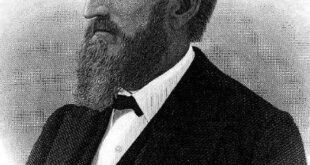Calistoga’s Historic Petrified Forest: A Family Legacy
Chris Conway walked the familiar walkway into Calistoga’s historic Petrified Forest, past where he once listened to the turnstile clicking with visitors, past where a vast oak tree once stood, and onto the grounds littered with its famously mutated stone trees, some unearthed by his great aunt when she bought the property more than a century back.
After 109 years in his family, Conway felt a bittersweet wash of emotion as he absorbed the reality surrounding this beloved tourist attraction — he and his family had decided it was time to sell.
“It’s time for someone else to take it over and continue,” Conway said, looking winsomely around the grounds.
A Family Legacy
Unlike the 30,000 visitors each year who take in the Petrified Forest’s massive stone “Queen” tree or the 60-foot “Giant,” — trees cloaked in volcanic ash more than three million years ago that choked their cells and turned them to stone — Conway once called the land home.
His Great Aunt Ollie Bockee bought the property in 1914, handed it down to her kids including Conway’s mother Jeanette Hawthorne, who ran the place for more than two decades, while his dad operated the attraction’s coffee shop.
“By the time I was 9 years old,” Conway said, “I started giving tours.”
A Historic Sale
The sale had been coming for a while. The property, which includes the 146-acre Petrified Forest tourist attraction – along with 350 acres of nearby land suitable for building and vineyards — had trickled down into the hands of its six current owners. With its $12 million asking price, the family was ready to cash out and let someone else write the next chapter.
“Over the years we’ve been, “Conway said, “I think, very good stewards of this property and preserving it.”
The Birth of a Natural Wonder
The land and its natural treasures were discovered in 1870 by Swedish homesteader Charles Evans, known as Petrified Charlie, who noticed a log peeking out of the soil that was hard as stone – yet featuring all the details of wood. He began excavating more and more and started charging people admission to come witness them.
Scientists theorize the stands of redwood, pine and oak trees were covered in ash during volcanic activity centered around what’s now Mount St. Helena some 3.4 million years ago. The ash and waters deposited minerals onto the bark, creating three-dimensional stone tree fossils.
Word spread through newspapers and travel magazines about this marvel of an attraction — with visitors initially making the windy, uphill journey by horse and buggy, and eventually by car starting in 1911.
A Property of California’s History
“It’s not just a tourist attraction,” said real estate agent Eric Drew of Hillsborough Sotheby’s International Realty who is handling the sale. “It’s a property that reflects most of the history of California, and not to mention the wine country.”
On a recent day, visitors strolled the paths meandering through the forest — the living and stone versions — walking past a sweeping view of Mount St. Helena, and up to a sloping hillside covered in the kind of ash responsible for the transformation of the trees.
“I just think it’s amazing,” said Dolores Moorehead who was visiting from the East Bay with her daughter. “One, you get to be out here in nature, and you get to see what nature has done, and how beautiful that is.”
A Family Legacy Carved in Stone
For Conway, the deeper dive into the forest’s history turns up the many characters who have played a part in its life; From Petrified Charlie to his family chapter that began with the formidable Bockee.
“She had a buggy whip,” Conway laughed, “and if people got out of hand, visitors – she would use it.”
Conway walked into the property’s currently closed coffee shop, a 1950s diner with its original period decor still in pristine shape. As children, he and his late sister would try to spin all the counter’s red stools in a single run.
No matter who buys the property, Conway figured, the family tree and its many tales were already etched in stone.
“The people here,” he said, “are often more interesting than the attraction.”
 Mind Uncharted Explore. Discover. Learn.
Mind Uncharted Explore. Discover. Learn.




